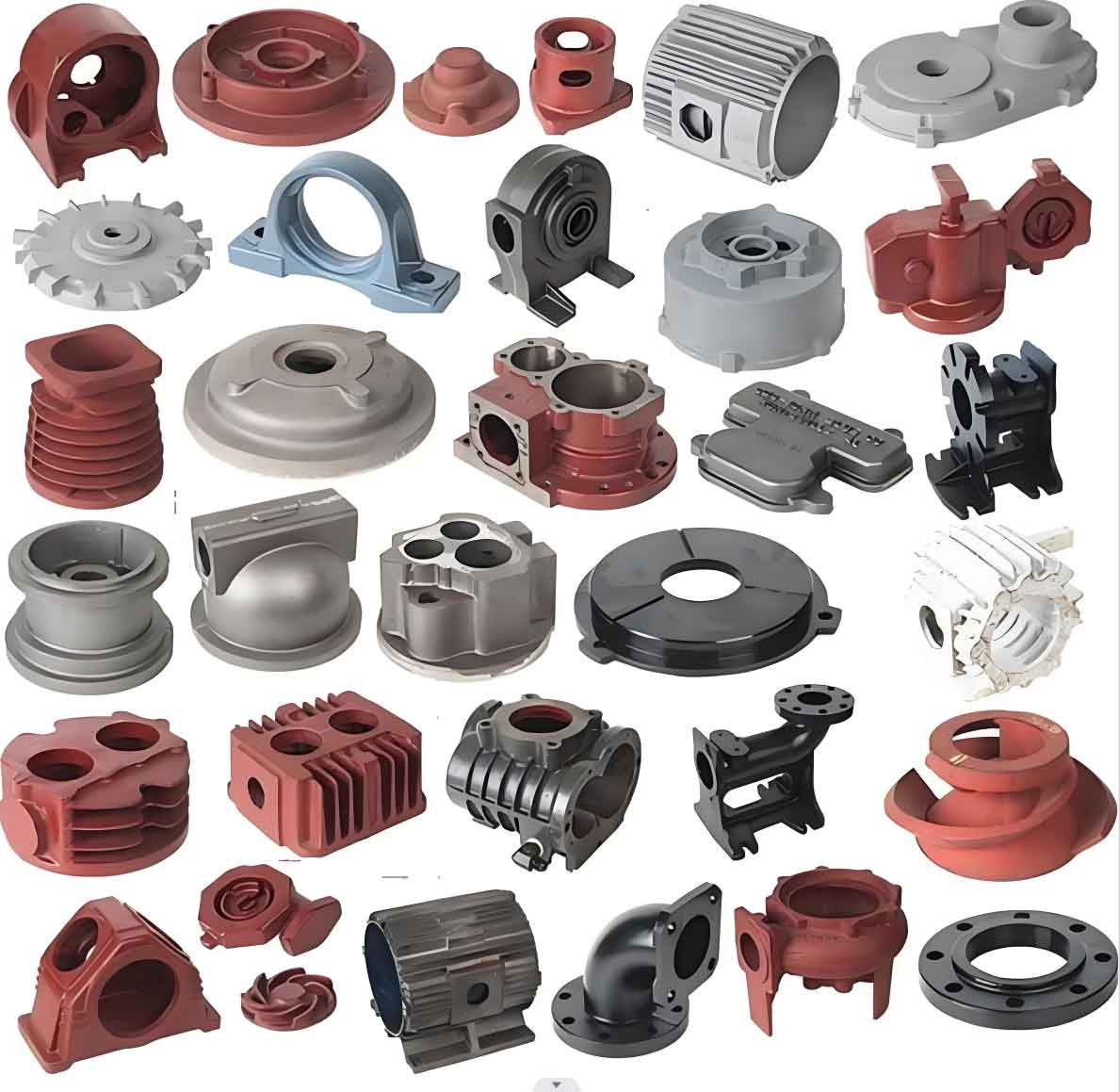Ductile cast iron and gray cast iron are two of the most commonly used types of cast iron, each with distinct properties and applications. A comparative study of these materials involves examining their composition, microstructure, mechanical properties, and typical uses. Here’s a detailed comparison:

Composition
- Ductile Cast Iron
- Carbon Content: Typically 3.0-4.0%
- Silicon Content: Typically 1.8-2.8%
- Nodulizing Agents: Magnesium or cerium are added to promote the formation of spherical graphite nodules.
- Other Alloying Elements: May include nickel, copper, and molybdenum to enhance specific properties.
- Gray Cast Iron
- Carbon Content: Typically 2.5-4.0%
- Silicon Content: Typically 1.0-3.0%
- Graphite Form: Exists as flake graphite.
- Other Alloying Elements: May include chromium, vanadium, and titanium to improve wear resistance and hardness.
Microstructure
- Ductile Cast Iron
- Graphite Morphology: Spheroidal (nodular) graphite.
- Matrix: Can be ferritic, pearlitic, or a combination, depending on heat treatment and alloying.
- Microstructural Features: The spheroidal shape of the graphite nodules helps in distributing stress evenly, reducing stress concentration points.
- Gray Cast Iron
- Graphite Morphology: Flake graphite.
- Matrix: Can be ferritic, pearlitic, or a combination, depending on cooling rate and alloying.
- Microstructural Features: The flake shape of graphite creates stress concentration points, leading to lower tensile strength and reduced ductility.
Mechanical Properties
- Ductile Cast Iron
- Tensile Strength: Higher than gray cast iron, typically ranging from 60,000 to 120,000 psi.
- Yield Strength: Typically higher, around 40,000 to 90,000 psi.
- Ductility: Higher, with elongation ranging from 5% to 25%.
- Impact Resistance: Higher impact resistance due to the spherical graphite morphology.
- Gray Cast Iron
- Tensile Strength: Lower, typically ranging from 20,000 to 60,000 psi.
- Yield Strength: Not well defined due to brittle nature.
- Ductility: Very low, with elongation typically less than 1%.
- Impact Resistance: Lower due to the flake graphite morphology.
Physical Properties
- Ductile Cast Iron
- Density: Similar to gray cast iron, around 7.1 g/cm³.
- Thermal Conductivity: Lower than gray cast iron due to the nodular graphite structure.
- Machinability: Good, but typically harder to machine than gray cast iron due to higher strength and toughness.
- Gray Cast Iron
- Density: Similar to ductile cast iron, around 7.1 g/cm³.
- Thermal Conductivity: Higher, making it ideal for applications requiring good heat dissipation.
- Machinability: Excellent, due to the presence of graphite flakes which act as a lubricant during machining.
Applications
- Ductile Cast Iron
- Automotive: Crankshafts, gears, and suspension components.
- Pipes and Fittings: Used extensively in the water and sewage industries due to its strength and impact resistance.
- Industrial Machinery: Machine frames, hydraulic components, and pump housings.
- Wind Turbines: Used in rotor hubs and other structural components.
- Gray Cast Iron
- Automotive: Engine blocks, brake discs, and cylinder heads due to its excellent thermal conductivity and machinability.
- Construction: Manhole covers, drainage pipes, and architectural castings.
- Machinery: Machine tool bases and housings where damping capacity is crucial.
- Cookware: Used for cast iron cookware due to its excellent heat retention properties.
Summary
Ductile Cast Iron is characterized by its spheroidal graphite structure, which provides superior mechanical properties such as higher tensile strength, better ductility, and greater impact resistance compared to gray cast iron. These properties make ductile cast iron suitable for applications that require robust performance under stress and impact.
Gray Cast Iron, on the other hand, is known for its flake graphite structure, which provides excellent thermal conductivity and machinability. While it lacks the strength and ductility of ductile cast iron, gray cast iron’s superior damping capacity and ease of machining make it ideal for automotive components, machine bases, and cookware.
By understanding these differences, engineers and designers can select the appropriate type of cast iron for their specific applications, optimizing performance and cost-effectiveness.
